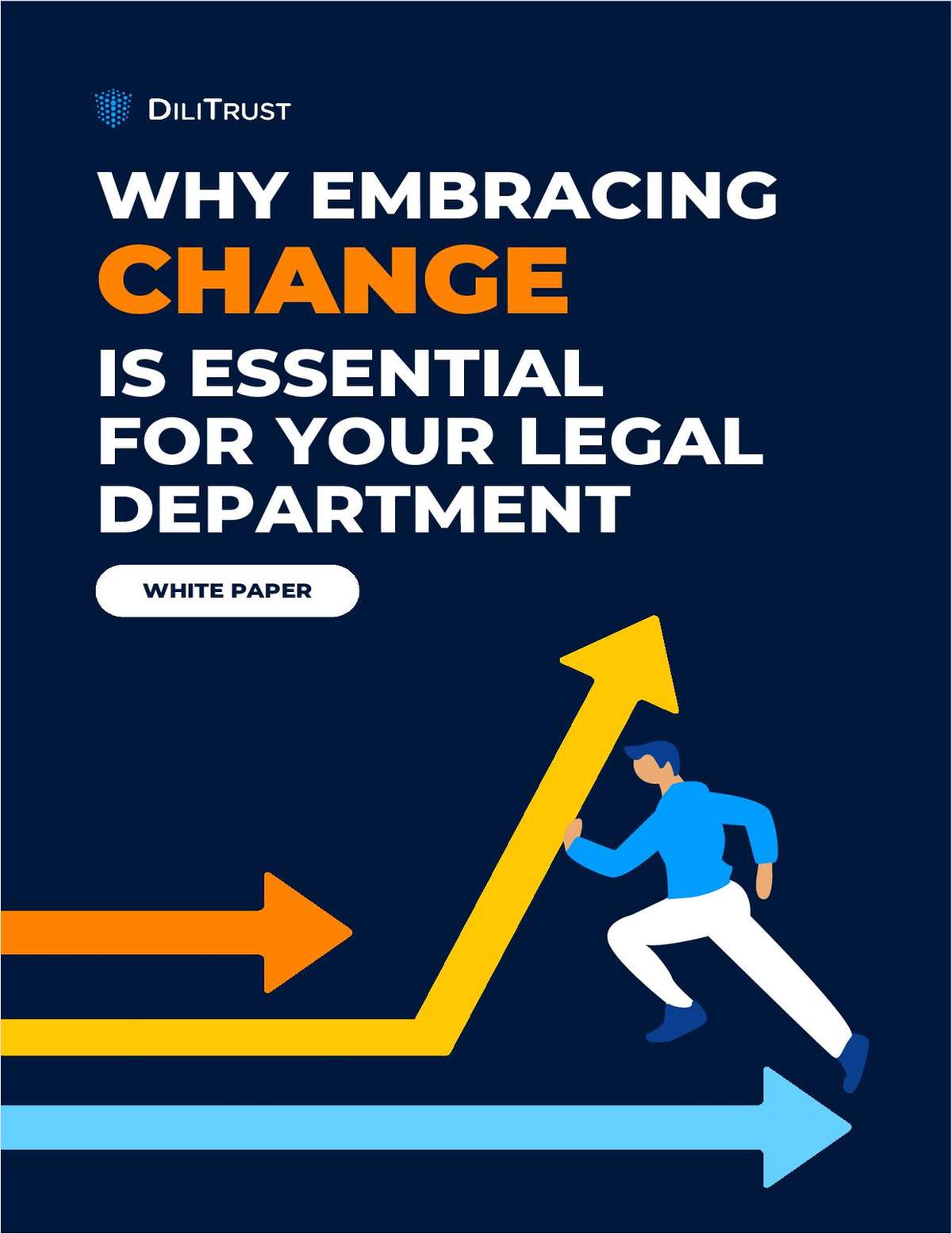So You Want to be a Supreme Court Clerk?
Here's our roadmap for the journey from law school to the nation's highest court.
December 15, 2017 at 02:03 PM
7 minute read
A clerkship at the U.S. Supreme Court is arguably the most prestigious job out there for law school graduates: Just 36 superstars get the gig each year, plus a few more who clerk for retired justices. (It can also be a lucrative position, with a handful of law firms paying eye-popping bonuses to former clerks who join up.)
But how does one score such a coveted gig? We examined the demographics of nearly 500 Supreme Court clerks hired since 2005 and spotted some trends. Here's our roadmap for the journey from law school to the nation's highest court. Be warned: Many aspire to the job but few will actually make the cut. Good Luck!
|
1. Go to Harvard or Yale Law
Yes, it's easier said than done to score a seat at the country's most selective law schools. But if you really want to be a Supreme Court clerk, your odds are best at these two schools. Fully half of all clerks since 2005 passed through Harvard Law School and Yale Law School. Harvard placed 124 clerks in that time period, while Yale sent 119. Stanford Law School is a distant third at 38, followed by the University of Virginia School of Law at 32.
So why are Harvard and Yale so dominant in producing clerks? It surely can't hurt that all nine justices attended their law schools. But it also comes down to the justices' comfort level with graduates of those elite institutions, their relationships with faculty members there, and the reality that you have to be pretty darn impressive to be admitted.
“The fact is that the students who get into this place are extraordinarily gifted,” said Harvard Law School professor Richard Lazarus, who has recommended dozens of students for Supreme Court clerkships. “They are gifted academically. They are gifted in life experiences. That doesn't mean that there aren't students at other schools who are as good as the Harvard and Yale students. There are. But the concentration we have here is, I think, unparalleled.”
|
2. Be White (infuriating, we know)
There's no sugar coating this one. The U.S. Supreme Court clerk pool is pretty darn white. Roughly 85 percent of clerks since 2005 have been white, followed by Asians at about 9 percent. Blacks have comprised 4 percent of clerks, and Hispanics less than 2 percent.
That's a pretty dismal record but, as we reported, few justices have gone out of their way to prioritize diversity.
Some minority law students underestimate their competitiveness on the federal clerkship market and don't apply, advisors said, while others pursue options that come with a heftier paycheck than the modest salaries clerks earn for their year of service, which typically hovers around $52,000. It depends a little bit on experience and location, but this is a good ballpark.
It certainly doesn't help that the top 19 feeder judges are white men. Speaking of feeder judges …
|
3. Snag a Clerkship with an Appellate Court “Feeder Judge”
A federal appeals court clerkship is basically a prerequisite to be considered for a Supreme Court slot, but not all appellate clerkships offer the same odds of moving up. A small group of appellate judges supply a large percentage of the clerks who end up at the high court. Thus, securing a job with one of these so-called feeder judges drastically improves your chances.
So whose chambers are a pipeline to the Supreme Court? You might recognize this name: Merrick Garland. The erstwhile Supreme Court nominee who sits of the U.S. Court of Appeals for the District of Columbia has supplied more than 8 percent of the high court clerks since 2005—42. He's followed by fellow D.C. Circuit Judge Brett Kavanaugh at nearly 7 percent, and J. Harvie Wilkinson III of the U.S. Court of Appeals for the Fourth Circuit at more than 6 percent. The first female judge on the Supreme Court feeder list is Edith Jones of the U.S. Court of Appeals for the Fifth Circuit, who comes in at No. 20.
Law schools are well aware of who is a feeder judge, and they position their students accordingly.
“If you are that ambitious, I think you have to look at what judges are sending clerks to the court,” said Lois Casaleggi, senior director of career services at the University of Chicago Law School. “It's not that you are shut out if you don't get a feeder court judge, but the way the process works, you have to put that in the mix.”
|
4. Being A Dude Can't Hurt
Let's give credit where credit is due. The Supreme Court clerk pool has become more welcoming to women in the John Roberts era. A 1998 study found women made up about a quarter of all clerks. Since 2005, that figure has averaged 34 percent, fluctuating between a low of 19 percent in 2006 to a high of 42 percent in 2016. But the fact remains that male clerks still outnumber women two to one, despite law school enrollment being pretty equal.
So what gives?
One theory is that men on average have higher law school grades than women, and top grades are a must to even being considered for a Supreme Court clerkship. (A 2015 study by Harvard Law School's Center on the Legal Profession found that men at the school do indeed earn slightly higher grades on the whole.) Law review is another in-demand credential for Supreme Court justices, but a 2010 study found that women held editor-in-chief positions at just 29 percent of law reviews at the top 50 schools.
Having that extra X chromosome isn't necessarily a liability to clerking, depending on the justice. Stephen Breyer has a long history of hiring two men and two women each year. Feminist icon Ruth Bader Ginsburg wins the prize for most women law clerks, though. Fully 52 percent of her clerks since 2005 have been women. Anthony Kennedy has the thinnest record of hiring women, at less than 14 percent.
|
5. Don't Be A Jerk
This one may seem obvious, but there is no room for divas, drama or sharp elbows in the Supreme Court chambers.
The justices are on the lookout not just for clerks who are smart and work hard, but who have demonstrated an ability to work well in teams and who are collegial. “You're hiring someone who you will be in very close contact with for the better part of a year,” Schwartzman said. “You want to make sure those people will be pleasant to work with.”
That Antonin Scalia's pallbearers were his former clerks illustrates the point that Supreme Court clerks enjoys a unique relationship with their bosses, and are part of that justice's clerk family for the rest of their lives.
“It sounds corny, but so much of it is personality,” said Michelle Sutton, who clerked for Clarence Thomas in 2011. “No one wants to spend lots and lots of hours for a year with a clerk who's a dud.”
This content has been archived. It is available through our partners, LexisNexis® and Bloomberg Law.
To view this content, please continue to their sites.
Not a Lexis Subscriber?
Subscribe Now
Not a Bloomberg Law Subscriber?
Subscribe Now
NOT FOR REPRINT
© 2025 ALM Global, LLC, All Rights Reserved. Request academic re-use from www.copyright.com. All other uses, submit a request to [email protected]. For more information visit Asset & Logo Licensing.
You Might Like
View All
T14 Sees Black, Hispanic Law Student Representation Decline Following End of Affirmative Action

Female GCs Joining Corporate Boards in Large Numbers, Overcoming Biases and Stereotypes Along Way
9 minute read
Long Island Midsize Firm and Managing Partner Sued for Sexual Harassment, Discrimination
6 minute read
Diversity Pros Hope Work Allocation Offers a Key to Building Inclusive Law Firms
5 minute readTrending Stories
Who Got The Work
Michael G. Bongiorno, Andrew Scott Dulberg and Elizabeth E. Driscoll from Wilmer Cutler Pickering Hale and Dorr have stepped in to represent Symbotic Inc., an A.I.-enabled technology platform that focuses on increasing supply chain efficiency, and other defendants in a pending shareholder derivative lawsuit. The case, filed Oct. 2 in Massachusetts District Court by the Brown Law Firm on behalf of Stephen Austen, accuses certain officers and directors of misleading investors in regard to Symbotic's potential for margin growth by failing to disclose that the company was not equipped to timely deploy its systems or manage expenses through project delays. The case, assigned to U.S. District Judge Nathaniel M. Gorton, is 1:24-cv-12522, Austen v. Cohen et al.
Who Got The Work
Edmund Polubinski and Marie Killmond of Davis Polk & Wardwell have entered appearances for data platform software development company MongoDB and other defendants in a pending shareholder derivative lawsuit. The action, filed Oct. 7 in New York Southern District Court by the Brown Law Firm, accuses the company's directors and/or officers of falsely expressing confidence in the company’s restructuring of its sales incentive plan and downplaying the severity of decreases in its upfront commitments. The case is 1:24-cv-07594, Roy v. Ittycheria et al.
Who Got The Work
Amy O. Bruchs and Kurt F. Ellison of Michael Best & Friedrich have entered appearances for Epic Systems Corp. in a pending employment discrimination lawsuit. The suit was filed Sept. 7 in Wisconsin Western District Court by Levine Eisberner LLC and Siri & Glimstad on behalf of a project manager who claims that he was wrongfully terminated after applying for a religious exemption to the defendant's COVID-19 vaccine mandate. The case, assigned to U.S. Magistrate Judge Anita Marie Boor, is 3:24-cv-00630, Secker, Nathan v. Epic Systems Corporation.
Who Got The Work
David X. Sullivan, Thomas J. Finn and Gregory A. Hall from McCarter & English have entered appearances for Sunrun Installation Services in a pending civil rights lawsuit. The complaint was filed Sept. 4 in Connecticut District Court by attorney Robert M. Berke on behalf of former employee George Edward Steins, who was arrested and charged with employing an unregistered home improvement salesperson. The complaint alleges that had Sunrun informed the Connecticut Department of Consumer Protection that the plaintiff's employment had ended in 2017 and that he no longer held Sunrun's home improvement contractor license, he would not have been hit with charges, which were dismissed in May 2024. The case, assigned to U.S. District Judge Jeffrey A. Meyer, is 3:24-cv-01423, Steins v. Sunrun, Inc. et al.
Who Got The Work
Greenberg Traurig shareholder Joshua L. Raskin has entered an appearance for boohoo.com UK Ltd. in a pending patent infringement lawsuit. The suit, filed Sept. 3 in Texas Eastern District Court by Rozier Hardt McDonough on behalf of Alto Dynamics, asserts five patents related to an online shopping platform. The case, assigned to U.S. District Judge Rodney Gilstrap, is 2:24-cv-00719, Alto Dynamics, LLC v. boohoo.com UK Limited.
Featured Firms
Law Offices of Gary Martin Hays & Associates, P.C.
(470) 294-1674
Law Offices of Mark E. Salomone
(857) 444-6468
Smith & Hassler
(713) 739-1250









